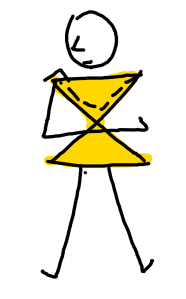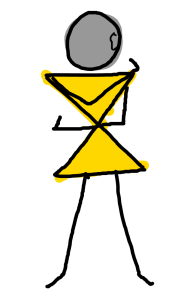Over the month,we have looked at a bit about the 1st Yama,Ahimsa or the principle of Non-Harming.Today,let’s take a peek into the 1st Niyama,which is Shaucha.
Whereas Yamas are the Moral Codes of Conduct pertaining to Self-Restraint,Niyamas are Codes of Conduct pertaining to Self-Observance.
शौचसंतोषतपःस्वाध्यायेश्वरप्रणिधानानि नियमाः। PYS II:32
Shaucha Santosha Tapah Swadhyaya Ishwar Pranidhanani Niyamaha.
The rules for self-observance are cleanliness,contentment,austerity,self-study & surrender to the Almighty.
The 1st Niyama offered by Patanjali in his Yoga Sutras is Shaucha or Cleanliness.We have often heard the saying: Cleanliness is next to Godliness.Right from childhood,emphasis is placed both at home & school,towards cleanliness.
That it ,indeed,is so important can be indicated by the fact that it has been placed 1st in the list of Niyamas.Patanjali’s Sutras are concise,precise & practical;not just random thoughts. So, certainly,Shaucha is of supreme importance.
Cleanliness,as in a lot of other cases,is both internal & external.Internal again is of the body & also of our thoughts.Our thoughts get converted into our actions.In the Dhammapada,the Buddha starts with saying that if one speaks or acts with an unwholesome mind,suffering follows one,just as the wheel follows the ox-cart.Alternately,when one speaks or acts with a wholesome mind,happiness follows one,as surely as one’s shadow that never leaves.In her hugely popular book,The Secret,Rhonda Bryne has also said that Thoughts become Things.So,the importance of pure,clean thoughts,leading to wholesomeness of words & deeds,becomes more & more relevant.
What I would like to discuss a little more in detail is internal cleansing of the body.A purified system leads to a feeling of lightness in the body,leading to & assisting in clarity of thought.The 1st practice is Vaman Dhauti or regurgitative cleansing.Vaman Dhauti is part of the Dhauti Kriya,which is the 1st of the Shat-kriyas or Six purificatory processes.The Shatkriyas are spoken of highly in two popular & ancient yogic texts,The Gheranda Samhita & The Hatha Pradipika.In both,they are said to purify the body by removing excess of phlegm,bile & fat.
The Process in brief
Vaman Dhauti is done in the morning,on an empty stomach.Prepare a saline solution of 1.5 litres/6 glasses.Purified water is to be used which should be lukewarm & a teaspoon of rock/sea salt is to be mixed well into it.Drink this rapidly not too far from a sink.Then,lean forward over the sink & insert the fore,middle & ring finger of your hand(make sure your nails are clean & trimmed) deep into the mouth.Rub & press the back of the tongue,just under the uvula(that small thingy hanging from the upper palate).Keep the body relaxed.If done correctly,the water should come out in a gush.After each expulsion,stimulate the tongue until all the consumed water has come out.The stomach has received a basic cleansing!!!
Benefits
Vamana Dhauti is effective in toning the abdominal organs as a strong muscular contraction takes place while performing the kriya.It is a good practice for those suffering from hyperacidity.The stomach is cleansed of excess mucus,bile & leftover food particles.There is a joyful feeling of lightness of both body & mind,leading to clarity of thought.Strongly recommended the morning after any celebration,in specific,& once a week,in general.
Precaution
Pregnant women & those suffering from high blood pressure,problems of the heart & brain,hernia,acute peptic ulcers,diabetics with eye problems should not perform Vaman Dhauti.
Other notes
1.Plain water may be used but salt water is preferable.
2.If there is a feeling of discomfort or indigestion after a heavy or inappropriate meal,this kriya can be performed within a few hours of such a meal to remove the undigested food from the stomach.This is called Vyaghra Kriya or Tiger practice.
Try it soon & find out for yourself how you feel!Happy Cleansing!!!







